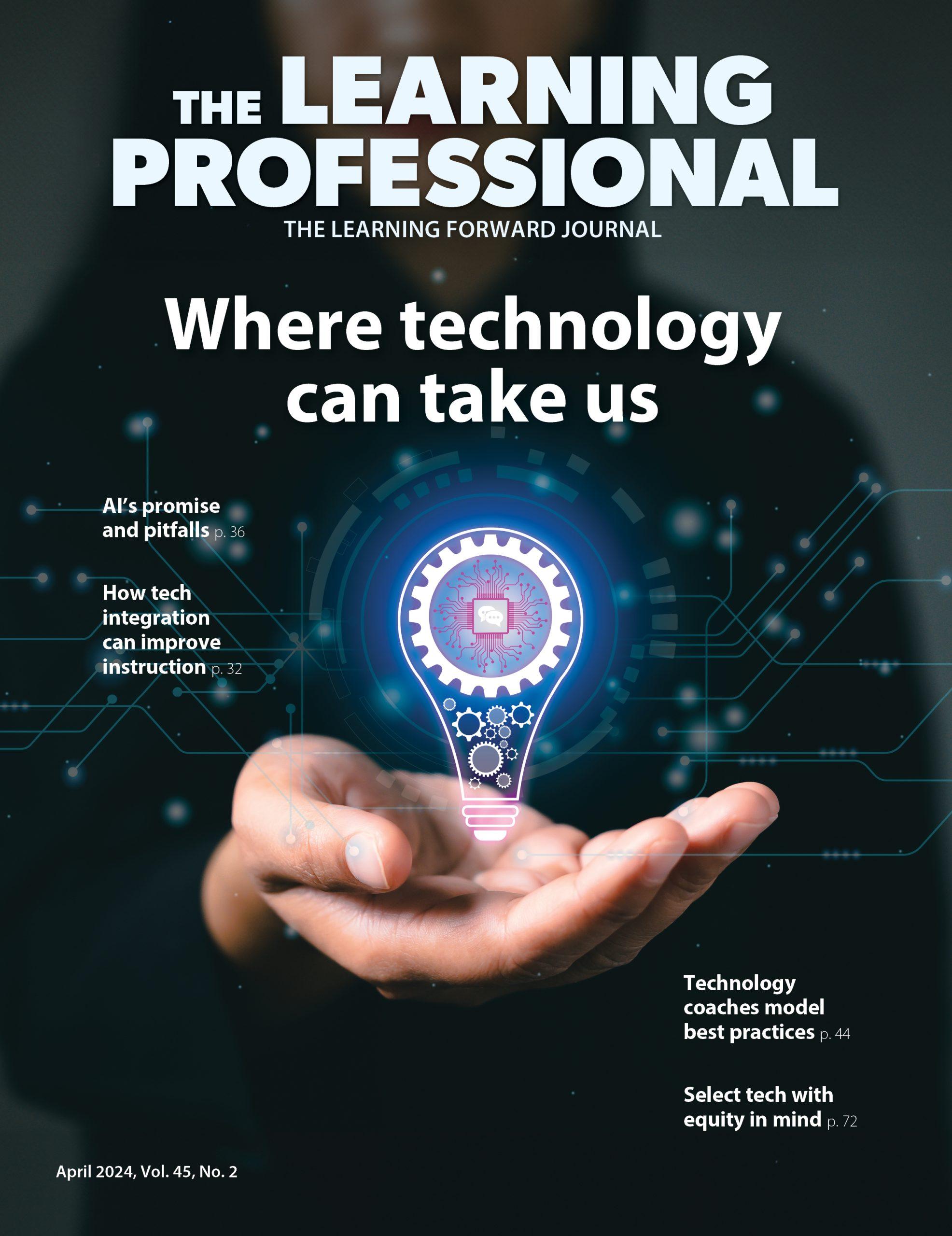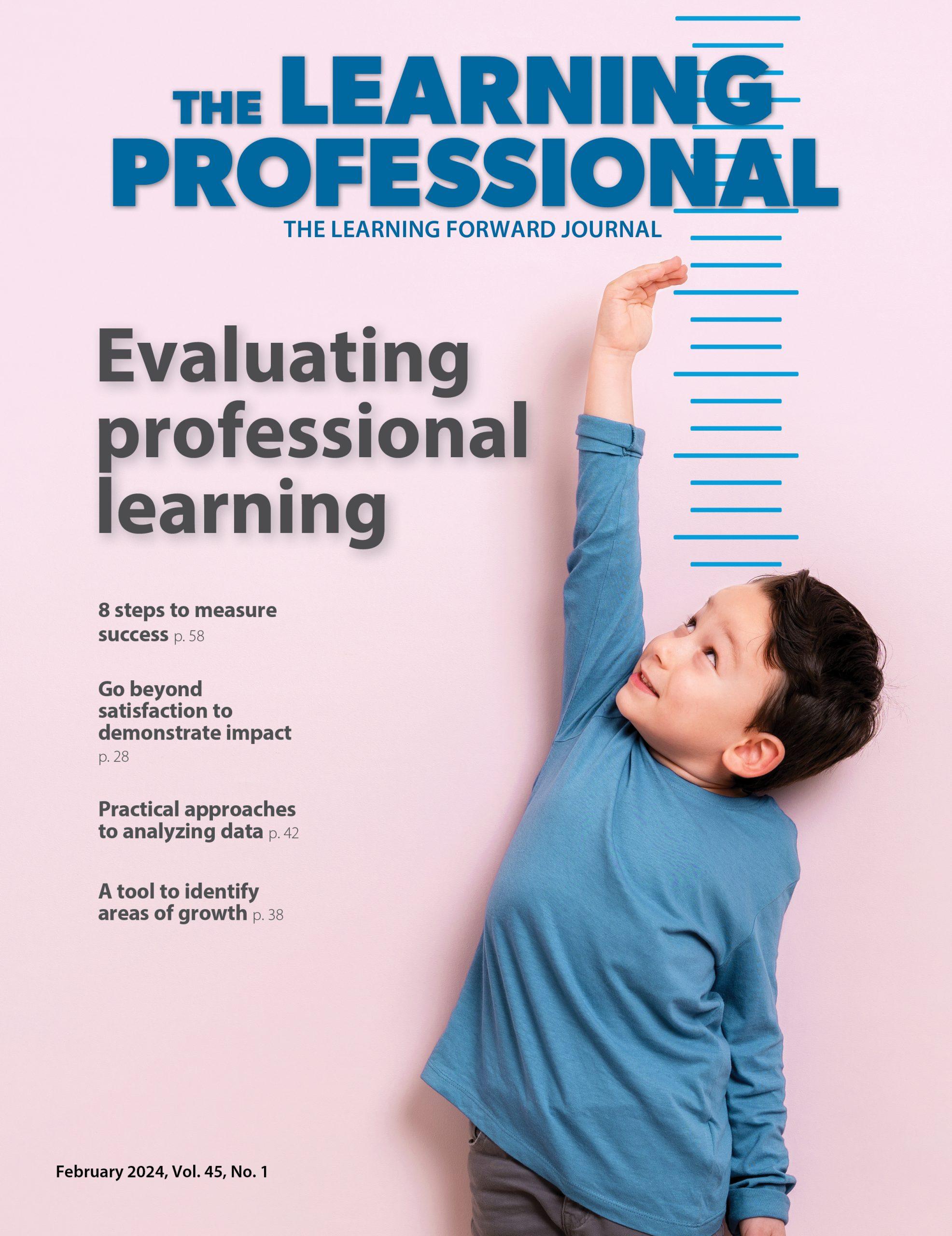FOCUS
Rethinking Early Education
Building a better preschool
By Eric Celeste Celeste
August 2017
Specialized professional learning is key to high-quality early education
Read the remaining content with membership access. Join or log in below to continue.
Sed ut perspiciatis unde omnis iste natus error sit voluptatem accusantium doloremque laudantium, totam rem aperiam, eaque ipsa quae ab illo inventore veritatis et quasi architecto beatae vitae dicta sunt explicabo. Nemo enim ipsam voluptatem quia voluptas sit aspernatur aut odit aut fugit, sed quia consequuntur magni dolores eos qui ratione voluptatem sequi nesciunt. Neque porro quisquam est, qui dolorem ipsum quia dolor sit amet, consectetur, adipisci velit, sed quia non numquam eius modi tempora incidunt ut labore et dolore magnam aliquam quaerat voluptatem.
Eric Celeste (eric.celeste@lfstage.xyz) is associate director of publications at Learning Forward.
Snapshot of early education progress
According to the National Institute for Early Education Research out of Rutgers University, in 2002 only two states enrolled 50% of their 4-year-olds and just three served more than 30%. In 2015-16, three states and the District of Columbia served more than 70% of 4-year-olds, a figure not reached by any state in 2002, and 18 states and the District of Columbia served more than 30%.
“This remarkable progress,” the institute concludes in The State of Preschool 2016, “largely reflects change in states that committed to offer every child a high-quality early education.” For example: Iowa went from serving 4% of 4-year-olds to 64%. The disparity state by state still varies widely. As of 2015-16, seven states still offered no public pre-K program at all.
That a state wouldn’t offer public pre-K is increasingly surprising, given the overwhelming research suggesting tremendous benefits to children, communities, and the states’ economic fortunes. The Harvard Center on the Developing Child estimates that about 80% of brain development happens in the first three years of life, when 700 to 1,000 neural connections form every second. As well, gaps in this progress emerge between children from different backgrounds. Researchers from Stanford University found that, by age 2, children from low-income families can be six months behind their peers from high-income families in language processing skills and vocabulary (Clark, Lautzenheiser, McBride, & Puckett, 2017).
References
Clark, K., Lautzenheiser, D., McBride, L., & Puckett, J. (2017, July). How — and why — US cities are rethinking early-childhood education. Washington, DC: Boston Consulting Group.
National Institute for Early Education Research. (2016). The state of preschool 2016. New Brunswick, NJ: Author.
Facts about the early childhood education workforce
TOOLS TO DOWNLOAD
Framework for Planning, Implementing, and Evaluating PreK-3rd Grade Approaches (Kauerz & Coffman, 2013) is a self-assessment tool designed to measure the depth of implementation and teacher teams as they align instruction across grade levels.
According to its authors, “this framework helps to address key questions facing those who are developing pre-K to 3rd-grade approaches in their school, districts, and communities.” It helps administrators, principals, and teachers answer questions such as:
What does a comprehensive pre-K to 3rd grade approach include?
The word “alignment” is used often, but what needs to be aligned?
What kinds of changes need to take hold in adults’ behaviors before we can expect to see improvements in child outcomes?
What kinds of responsibilities need to be shared among age 0 to 5 programs, grades K-3, families, and communities?
You can download the framework at https://depts.washington.edu/pthru3/PreK-3rd_Framework_Legal%20paper.pdf.
Reference
Kauerz, K. & Coffman, J. (2013). Framework for planning, implementing, and evaluating preK-3rd grade approaches. Seattle, WA: College of Education, University of Washington.
The economic benefits of high-quality early education
The list of high-quality early childhood education programs that have shown positive economic effects for children, communities, and states is considerable. These include (but aren’t limited to) the Abecedarian Project in North Carolina, the Perry Preschool Project in Michigan, and the Chicago Child-Parent Centers — each a long-term research project that has shown long-lasting positive outcomes for kids.
Researchers from the University of North Carolina have estimated that every $1 spent on Abecedarian delivered $2.50 worth of total benefits for society, as a result of higher incomes, reduced health care costs, and less need for public assistance (Lynch & Vaghul, 2015).
University of Chicago economist and Nobel laureate James Heckman has calculated that, for every $1 spent on Perry Preschool, total benefits to society ranged from $7 to $10 in the form of increased lifetime earnings and reduced remedial education and welfare payments —what Heckman calls an “extremely high rate of return” (Lynch & Vaghul, 2015).
Reference
Lynch, R. & Vaghul, K. (2015, December). The benefits and costs of investing in early childhood education. Washington, DC: Washington Center for Equitable Growth.
How principals can create professional development opportunities specific to teaching young children
Excerpted with permission from Taking Action: What Principals and Administrators Can Do To Ready Their Schools To Support Kindergarten Transitions (Helsel & Gandhi, 2017).
Provide teachers and other appropriate staff with the opportunity to attend national, state, or local conferences focused on teaching young children.
The annual National Association for the Education of Young Children (NAEYC) conference provides multiple practitioner-friendly sessions regarding developmentally appropriate practice: www.naeyc.org/events.
NAEYC affiliates offer conferences as well. Check out this searchable directory:
www.naeyc.org/affiliates/conferences.
Offer teachers and other staff the opportunity to participate in professional development that focuses on developmentally appropriate practice and the importance of play and movement.
It is important to provide professional development to ensure quality teaching of young children. Principals, other administrators, and teachers need to build their knowledge about what is age- and developmentally appropriate across the continuum, along with whole-child learning and how young children learn. NAEYC provides information about upcoming professional development opportunities, including opportunities for principals specifically, at www.naeyc.org/ecp.
Also consider job-embedded professional learning opportunities for teachers by engaging teachers in activities that include development and review of case studies and observation of fellow teachers. Encourage teachers to participate in professional learning communities (PLCs). Ideas for creating a PLC are at www.edutopia.org/professional-learning-communities-collaboration-how-to. One particularly helpful approach is to provide professional development opportunities for preschool and kindergarten staff together, which fosters a shared understanding.
Use books and videos focused on developmentally appropriate practice as lower cost options for providing learning about teaching young children.
Sue Bredekamp discusses developmentally appropriate practice at www.youtube.com/watch?v=ny1u9a7-EJc.
NAEYC offers the DVD Developmentally Appropriate Practice: A Focus on Intentionality and on Play: www.naeyc.org/store/node/17110.
NAEYC also provides handouts on developmentally appropriate practice:
www.imaginationplayground.com/images/content/2/9/2964/Developmentally-Appropriate-Practice-Play.pdf or www.naeyc.org/dap/10-effective-dap-teaching-strategies.
Reference
Helsel, F.K.I. & Gandhi, E.V. (2017). Taking action: What principals and administrators can do to ready their schools to support kindergarten transitions. Portland, OR: Education Northwest.
Lack of support for preschool Dual Language Learners
“Lack of state support for preschool Dual Language Learners (DLLs) continues to be a serious concern. Only 22 state programs [2015-16] could report the number of DLLs they serve. Just five programs (in four states) require teachers of DLLs to have any special qualifications preparing them for the challenges of educating DLLs. On a more positive note, most states have culturally sensitive early learning and development standards. However, unless teachers are supported in achieving them, such standards are unlikely to lead to effective practice.”
Source: National Institute for Early Education Research. (2016). The state of preschool 2016. New Brunswick, NJ: Author.
References
Cobb, D. (2001). Early childhood assessment and teacher training. Washington, DC: U.S. Department of State.
Loewenberg, A. (2017, July). Connecting the steps: State strategies to ease the transition from pre-K to kindergarten. Washington, DC: New America.
Lynch, R. & Vaghul, K. (2015, December). The benefits and costs of investing in early childhood education. Washington, DC: Washington Center for Equitable Growth.
National Association for the Education of Young Children. (2015, June). Call to action. New York, NY: Author.
Wechsler, M., Melnick, H., Maier, A., & Bishop, J. (2016). The building blocks of high-quality early childhood education programs (Policy Brief). Palo Alto, CA: Learning Policy Institute.
Recent Issues
LEARNING TO PIVOT
August 2024
Sometimes new information and situations call for major change. This issue...
GLOBAL PERSPECTIVES
June 2024
What does professional learning look like around the world? This issue...
WHERE TECHNOLOGY CAN TAKE US
April 2024
Technology is both a topic and a tool for professional learning. This...
EVALUATING PROFESSIONAL LEARNING
February 2024
How do you know your professional learning is working? This issue digs...










